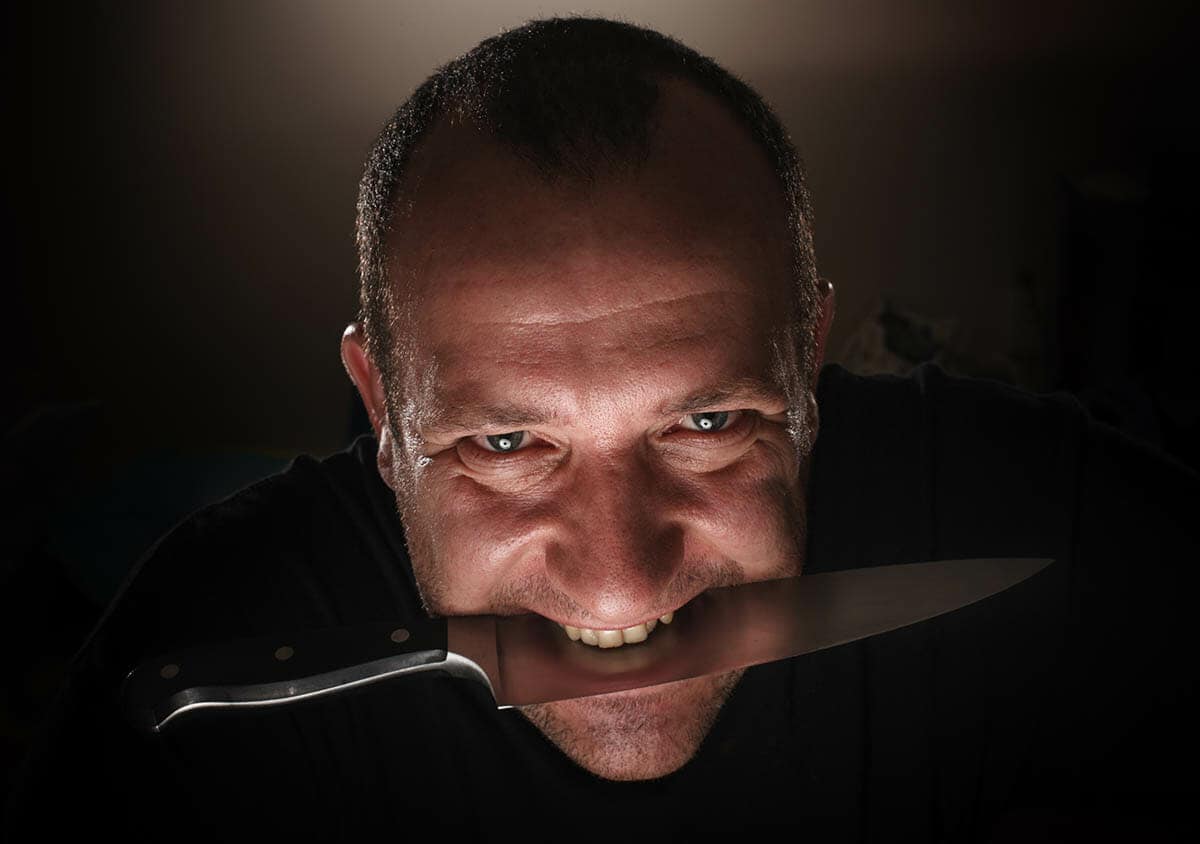Knives Are Meant To be Seen and Talked About, But Never Used
There’s still a minority of knife enthusiasts out there who hold stubbornly to the opinion that knives are meant to be useful. Any blade maniac worth his salt knows the highest function of his knife is to accessorize his pants. Most of us could prattle off a list of details about our knives that make it “useful”, but it’s an entirely different skillset to make it look like you actually know how to use it in the first place.
It makes no sense why anyone would spend $400 on a knife only to take it outside and ruin the finish slicing into rope or wood. It’s an old fashioned mentality. And not the cool kind of old-fashioned like vinyl records or knitting. It’s old fashioned like cutting firewood with an axe, which is to say a lot of dirty work. It’s a lot easier to just wear a lot of flannel, possibly like someone who cuts wood with an axe, and then talk about doing it.
The Basics of Knife Fashion

There’s a simple way to think of this, for those still taking their knives into the woods for the express purpose of actually using them. Treat your knife like you would treat a suit: something that is stylish but uncomfortable, worn in plain sight and always with the intention of making you look like a better person than you actually are.
As far as where you wear it, the belt is a tried and true method of both getting conversations about your knife started, and simply showing it off for everyone to enjoy so you don’t have to flash the micarta handle in the face of every passerby on the street.
The inside of the pocket is a more subtle choice for those with folders. Your more distinguished knife owner will choose this method and rely on their calculated charm to dominate every conversation and drag it toward their knife. In this way, they can feign a certain degree of humility that lures the unsuspecting stranger into the depths of social obligations before snatching them up in a three hour story about finding the knife at a gun show last year.
Start Your Knife Conversation

Things get a little trickier once you’ve trapped someone into talking about whatever pointy thing happens to be within your reach. While it’s been established that you should not, under any circumstances, use your knife, the whole point of the tool itself is to appear as if you do things.
This means you will have to discuss camping, fishing, hunting, whittling, sharpening, cutting, driving, climbing, standing around trucks, owning a dog, running, falling, jumping, and looking outside in such a way that makes you at least appear to be a person who does anything besides shitpost on internet forums and re-watch The Bourne Identity. Any talk about toughness against the elements or skinning capabilities should always be restricted to a rhetorical introduction about how expensive the materials of the knife are, because if we’re being honest we just like the way our voices sound when we say “S30V steel.”
It’s safe to assume whoever you’re talking to doesn’t know what he’s talking about either, so feel free to make things up as you go along. If you find yourself having trouble, you can rely on two ambiguously functional activities that can both demonstrate the excellent structure of your knife and your hypothetical ability to use it.
- Start with the cardboard test. Whether or not you’ve actually used your knife to cut through cardboard is irrelevant. For the purposes of the conversation, your knife did great, but you maybe still don’t like the way the blade handles yet.
- Switch to branch cutting if your cardboard story didn’t produce the proper level of riveted admiration. At some point you chopped the knife into a log and hammered the other end with a big stick, and it just cut through that thing like a chainsaw. For all anyone knows.
It’s not particularly important why you did this. Maybe you were trying to build a shelter, or cut firewood. More likely you found yourself swinging a $600 fixed blade knife around your backyard, saw an innocent branch and decided it needed to be broken down into pieces small enough to fit into a toy box. The point is that the convex grind on this blade is a masterpiece.
The Theoretical Knife Fight

Once you’ve exhausted your creativity pretending to know how to use your knife to create scrap piles of paper and wood shavings, it’s the earnest expectation of all knife enthusiasts that you inevitably turn the conversation to how your knife might be used in combat. The knife fight is generally considered the golden standard of every blade, regardless of what it was originally designed for.
Some might think it’s obnoxious to bring up how the double edged spear point blade would be ideal for stabbing attacks every time you swing your knife around in hypothetical motions, but it’s actually considered impolite to go too long in a knife conversation without saying something implausible about your knife’s ability to a kill a man and especially your ability to use it in such a way.
Be very careful here. Some mistake the requirement of the Knife Fight Conversation as an obligation to actually someday fight with the knife.
This is considered impolite in the respectable knife community. Very few things will harm the resale value of your knife like sticking it in another person. There are ways to clean it up and make it mostly presentable, but after so many nicks and stains there’s just no way to hide the fact that you’ve actually used your knife for something.
Use Your Knife with Your Mouth

The deeper lesson here is that proper knife use does not happen with your hands; it happens with your mouth. We live in a civilized society now. The whole idea of cutting things ourselves is as antiquated as baking your own bread. No one is saying you can’t bake your own bread. It’s just that there’s an entire aisle of bread that’s been baked and cut for you. Do you have any idea how much time you’re wasting baking your own bread and cutting it yourself? No, you don’t. Because you’ve never done it. You buy it sliced like a normal person, and save yourself the trouble of cleaning up all the flour, and garlic, and nut things, and whatever else makes bread.
Not that there’s anything wrong with bread bakers. It just seems like I wouldn’t want them to hold my knife, because I bet their hands are always covered in shortening and flour. The point is, the next time one of you puts your grubby, plebeian fingers on the Damascus steel of my thousand dollar kukri, I will get on my friend’s internet knife-fighting forum and write hundreds of words about your poor blade maintenance habits. And they will be cutting as hell.
